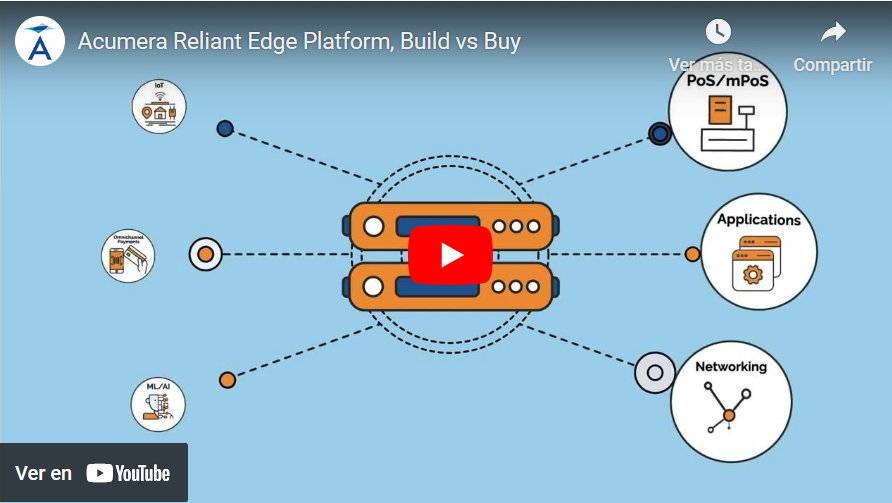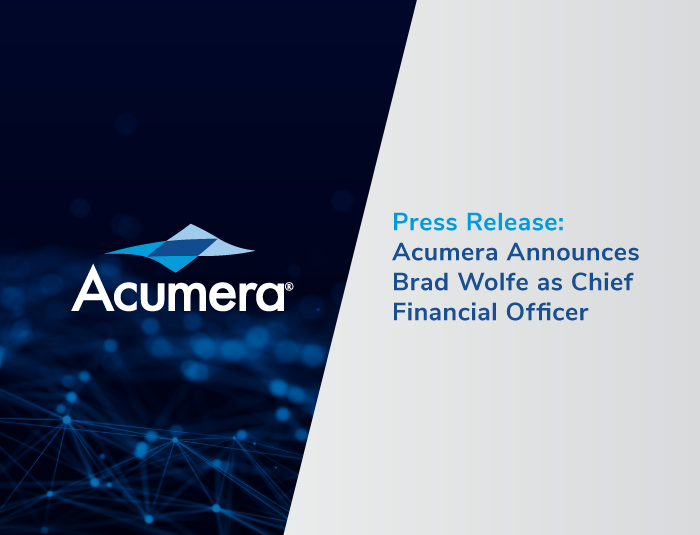
In my role at Acumera, I work closely with retail, convenience store, QSR, and fuel operators to design edge strategies that deliver on what matters most: stability, security, scalability, and operational simplicity — across thousands of distributed sites.
One of the questions I hear more and more:
“Should we be running Kubernetes at the edge?”
And here’s the answer I give our customers:
For most retail edge environments, Docker-based lightweight containerization is a better fit.
Why the Edge Isn’t Just a Mini Data Center
Too often, I see businesses approaching edge computing as if it’s just a smaller version of cloud or data center architecture. But the edge is its own category — with unique constraints and operational realities that cloud-native tools like Kubernetes were never designed for.
👉 If you’d like a deeper dive on this, check out our blog on How Acumera is Transforming Restaurant Technology with Edge Computing.
Kubernetes: Built for Cloud, Not Retail Edge
Kubernetes is an incredible orchestration tool — for the right environment. It was built for:
✅ Stable, connected data centers
✅ Big servers with lots of resources
✅ Teams of Kubernetes engineers to manage it
But here’s what real-world retail edge environments look like:
🚫 Limited hardware footprint (think thin edge boxes)
🚫 Intermittent connectivity
🚫 No on-site IT support
🚫 PCI DSS and security compliance requirements
🚫 Business-critical systems like POS and payments that must stay online
For these environments, trying to run full Kubernetes stacks across thousands of stores usually introduces:
- More operational complexity
- Higher resource requirements
- Increased costs (hardware + talent)
- Slower time to value
Why I Recommend Docker-Based Architectures for Retail Edge
At Acumera, we intentionally architect our Acumera Consolidated Edge (ACE) platform around Docker-based lightweight containerization — because it solves the real needs of retail operators:
👉 Learn more about our approach to edge orchestration with ACE.
Here’s why Docker wins for retail edge:
✅ Runs on existing edge hardware — no forklift upgrades
✅ Leaves more resources available for mission-critical apps like POS and loyalty
✅ Simple to manage across thousands of locations
✅ Rapid updates and rollbacks — essential for PCI compliance
✅ Supports store-critical apps like payments, IoT, video, loyalty, and AI inference
✅ Lower cost and faster time to value
When Kubernetes Does Make Sense
There are definitely use cases where Kubernetes excels — and I’ve advised customers accordingly. It’s ideal for:
✅ Industrial IoT
✅ Heavy AI inference at the edge
✅ High-compute environments (energy, telco, transportation)
But for most retail, QSR, c-store, and fuel operators — who are focused on operational uptime, compliance, and scalability — Docker-based edge architectures consistently deliver better outcomes.
It’s Not Just About Docker vs Kubernetes — It’s About Designing for Edge
Many people think they must choose between serverless and containers at the edge — but as I often tell our customers, the real question is:
What is the right architecture for YOUR edge workloads?
👉 We explore this in more detail in our post: Serverless vs Containers: Which One is Best?.
Why Simplicity Wins at Retail Edge
At the end of the day, here’s what our retail edge customers care about:
✅ Payments that work — always
✅ POS systems that stay online — and can continue to process payments even when the primary store connection is lost
✅ PCI DSS compliance
✅ Secure, resilient delivery of store-critical applications
✅ Operational simplicity at scale
If you’d like more perspective on securing edge environments for PCI compliance, I also recommend reading our guide to PCI DSS 4.0.
How Acumera Helps Customers Stay Ahead
We built our Acumera Consolidated Edge (ACE) platform to meet real-world retail needs — not just cloud-native ideals:
✅ Lightweight Docker-based orchestration
✅ Secure, compliant, fleet-wide management
✅ 24/7 managed services
✅ Designed for edge-specific constraints
✅ Proven in production — across thousands of locations
👉 See how we helped Casey’s scale edge computing across 2,900+ locations.
Final Takeaway: Keep It Simple, Keep It Secure
Kubernetes is a fantastic tool — in the right context. But for most retail edge deployments, Docker-based architectures are a better fit:
✅ Simpler
✅ More secure
✅ Faster to deploy
✅ Lower total cost of ownership
✅ Easier to operate across thousands of locations
That’s why it’s what I recommend to our retail edge customers — and why it’s at the heart of how we’ve designed the Acumera Reliant Platform and ACE.
If you’d like to talk through what edge architecture would work best for your business — or want to see how brands like Casey’s are succeeding with this model — feel free to reach out. I’m always happy to share what we’re seeing in the field.
Ready to Simplify Your Retail Edge?
If you’re evaluating edge architecture for your retail, c-store, QSR, or fuel operations — we’d love to show you how Acumera’s platform can help.
👉 See how we deliver:
✅ Lightweight, secure Docker-based edge orchestration
✅ Always-on POS and payments
✅ Simplified PCI DSS 4.0 compliance
✅ 24/7 managed network and security services
✅ Proven results across thousands of locations
Let’s explore how Acumera can help your business stay connected, secure, and ready for what’s next.





















